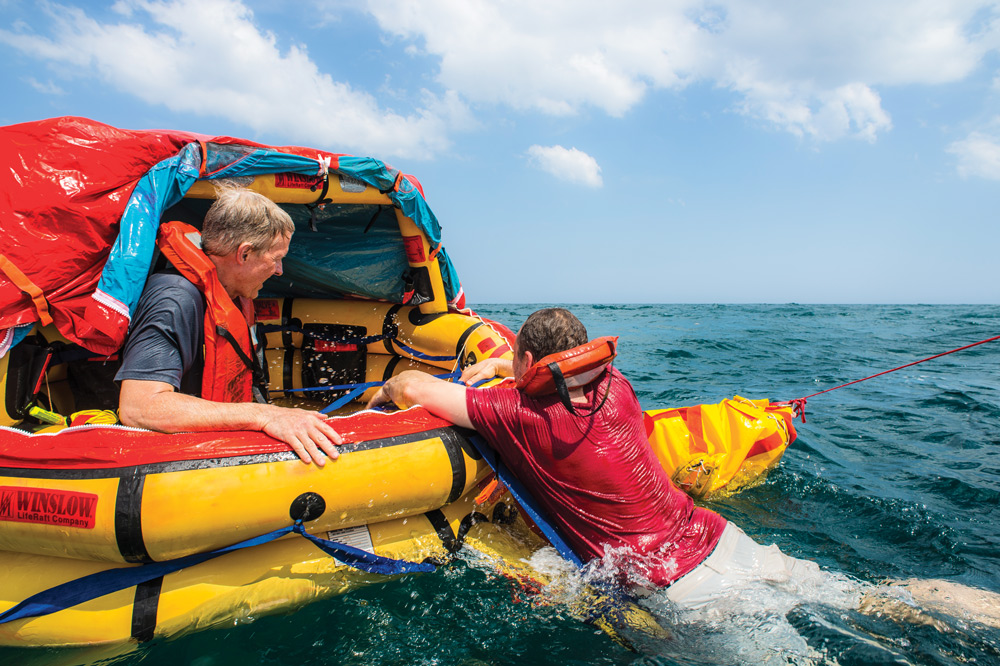Illustrated guide to fitting out
Be Safe

Start with navigation lights, making sure that everything is working properly. LED bulbs have a long life, but if you haven’t made the move to those yet, you may want to change the bulbs in any lights on the mast if it’s out of the boat. It’s a small job that’s much easier to accomplish on solid ground rather than in the bo’sun’s chair.
Check the expiration or repacking dates on any safety equipment on the boat, such as flares, man-overboard modules and life rafts. Double check that epirbs, personal locator beacons and VHF radios with DSC capability are properly registered.
It is recommended that inflatable life jackets be serviced annually. Disconnect the CO2 cartridge and inflate each jacket manually, then let it sit for a few hours and make sure it is maintaining air pressure. It is usually not possible to repair leaking jackets, so it is recommended that the jacket be cut up to ensure it never used, said US Sailing Safety at Sea Chairman Chuck Hawley.
Inspect and count all life jackets on the boat, making note of the sizes and types available. Outfit them with lights and whistles and change light batteries if needed.
Fire extinguishers should also be examined to make sure they are not expired and that the gauge is in the green. Inverting them several times will help unpack the powder in them.
Lastly, take inventory of the charts on board, making sure you have the proper paper charts for the areas you sail in or several redundant methods of accessing an electronic chart.

Comments